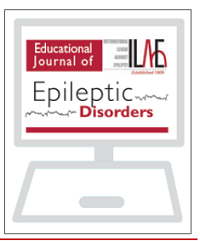 “Advances in the development of drugs with novel mechanisms of action have not been sufficient to significantly reduce the percentage of patients presenting drug-resistant epilepsy. This lack of satisfactory clinical results has led to the search for more effective treatment alternatives with new mechanisms of action.
“Advances in the development of drugs with novel mechanisms of action have not been sufficient to significantly reduce the percentage of patients presenting drug-resistant epilepsy. This lack of satisfactory clinical results has led to the search for more effective treatment alternatives with new mechanisms of action.
The aim of this study is to examine epidemiological aspects of the use of cannabis-based products for the treatment of epilepsy, with particular emphasis on the main mechanisms of action, indications for use, clinical efficacy, and safety.
In recent years there has been growing interest in the use of cannabis-based products for the treatment of a wide range of diseases, including epilepsy. The cannabis plant is currently known to contain more than 100 terpenophenolic compounds, known as cannabinoids. The 2 most abundant are delta-9-tetrahydrocannabinol and cannabidiol.
Studies of preclinical models of epilepsy have shown that these cannabinoids have anticonvulsant properties, and 100% purified cannabidiol and cannabidiol-enriched cannabis extracts are now being used to treat epilepsy in humans. Several open-label studies and randomised controlled clinical trials have demonstrated the efficacy and safety of these products.”
https://www.ncbi.nlm.nih.gov/pubmed/32317123
https://www.sciencedirect.com/science/article/pii/S0213485320300402?via%3Dihub

 “Despite the constant development of new antiepileptic drugs (AEDs), more than 30% of patients develop refractory epilepsy (RE) characterized by a multidrug-resistant (MDR) phenotype. The “transporters hypothesis” indicates that the mechanism of this MDR phenotype is the overexpression of ABC transporters such as P-glycoprotein (P-gp) in the neurovascular unit cells, limiting access of the AEDs to the brain.
“Despite the constant development of new antiepileptic drugs (AEDs), more than 30% of patients develop refractory epilepsy (RE) characterized by a multidrug-resistant (MDR) phenotype. The “transporters hypothesis” indicates that the mechanism of this MDR phenotype is the overexpression of ABC transporters such as P-glycoprotein (P-gp) in the neurovascular unit cells, limiting access of the AEDs to the brain. “Many epilepsy patients are refractory to conventional antiepileptic drugs.
“Many epilepsy patients are refractory to conventional antiepileptic drugs. “Cannabis has been considered as a therapeutic strategy to control intractable epilepsy.
“Cannabis has been considered as a therapeutic strategy to control intractable epilepsy.
 “The growing interest in cannabidiol (CBD), specifically a pure form of CBD, as a treatment for epilepsy, among other conditions, is reflected in recent changes in legislation in some countries.
“The growing interest in cannabidiol (CBD), specifically a pure form of CBD, as a treatment for epilepsy, among other conditions, is reflected in recent changes in legislation in some countries. “Highly purified
“Highly purified  “In recent years, cannabis has been gaining increasing interest in both the medical research and clinical fields, with regard to its therapeutic effects in various disorders. One of the major fields of interest is its role as an anticonvulsant for refractory epilepsy, especially in the pediatric population. This paper presents and discusses the current accumulated knowledge regarding artisanal cannabis and Epidiolex®, a United States Food and Drug Administration (FDA)-approved pure
“In recent years, cannabis has been gaining increasing interest in both the medical research and clinical fields, with regard to its therapeutic effects in various disorders. One of the major fields of interest is its role as an anticonvulsant for refractory epilepsy, especially in the pediatric population. This paper presents and discusses the current accumulated knowledge regarding artisanal cannabis and Epidiolex®, a United States Food and Drug Administration (FDA)-approved pure  “Epilepsy is a neurological disorder characterized by the presence of seizures and neuropsychiatric comorbidities. Despite the number of antiepileptic drugs, one-third of patients did not have their seizures under control, leading to pharmacoresistance epilepsy.
“Epilepsy is a neurological disorder characterized by the presence of seizures and neuropsychiatric comorbidities. Despite the number of antiepileptic drugs, one-third of patients did not have their seizures under control, leading to pharmacoresistance epilepsy. “Cannabis sativa L. is an ancient medicinal plant wherefrom over 120 cannabinoids are extracted. In the past two decades, there has been increasing interest in the therapeutic potential of cannabis-based treatments for neurological disorders such as epilepsy, and there is now evidence for the medical use of cannabis and its effectiveness for a wide range of diseases.
“Cannabis sativa L. is an ancient medicinal plant wherefrom over 120 cannabinoids are extracted. In the past two decades, there has been increasing interest in the therapeutic potential of cannabis-based treatments for neurological disorders such as epilepsy, and there is now evidence for the medical use of cannabis and its effectiveness for a wide range of diseases.